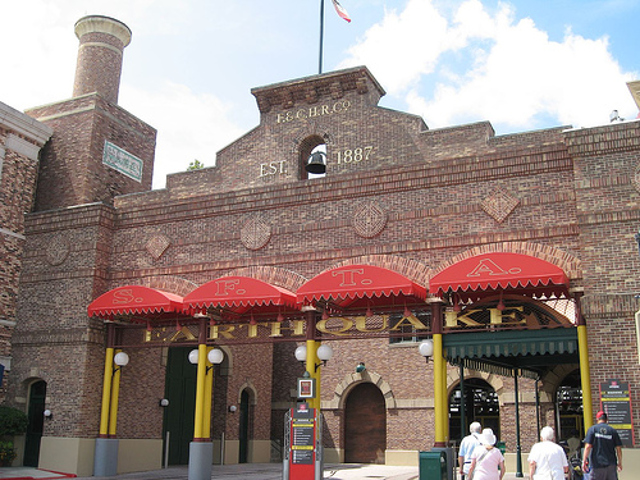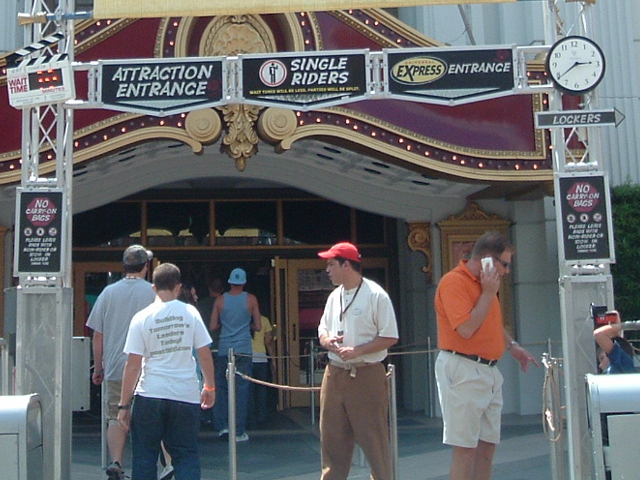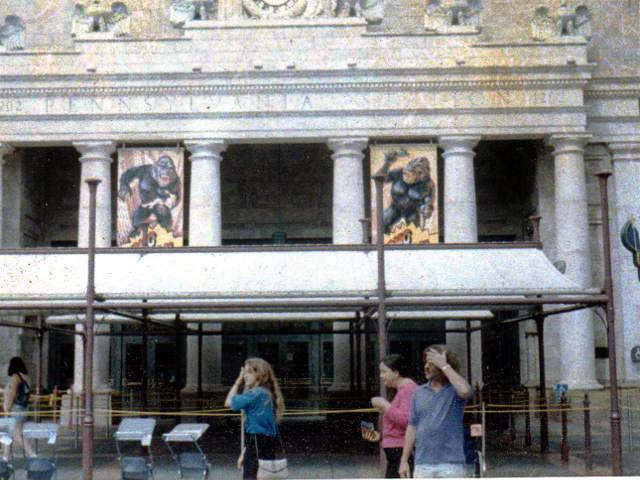4. Cleaning and prepping

For both attractions, the majority of cleaning was done at night. If there was time after cycling, however, the team lead would walk through the attraction and see what needed a bit of polishing. We typically hit those areas in teams of two, focusing more on a quick shine than a truly deep cleaning.
We also had to set up the queue, arranging the lines to minimize walking for the early arrivals while putting everything in place to quickly open up new sections as the queue began to fill. We made sure props were placed where they belonged, tested microphones and other interactive items, and checked the sets for anything that didn’t belong, such as our water bottles or jackets.
5. Rotations and details

Depending on the attraction and the day, we often had a quick opening meeting. If we were overstaffed, team members might be offered Early Releases, or ERs. That allowed us to go home early without accumulating attendance points but, of course, it also meant not getting paid for the rest of the workday. We also discussed operational details for the day, such as projected attendance, any unusual factors at our attraction (such as a special effect that wasn’t working right) and, most importantly, our rotations for the day.
A rotation is a series of positions that a team member moves through in a regular sequence throughout the shift. At Earthquake, we were divided into spiel rotation and non-spiel rotation. The non-spiel rotation was responsible for all the strictly operational positions such as Greeter, Express, and the various platform positions involved with loading, dispatching and unloading the subway cars. There was also a very small control tower rotation, but the majority of employees were never involved in that one. The spieling rotation stayed inside the building all day, and was responsible for delivering the spiels in each room. The team members who interacted directly with the volunteers in the final show room were also part of the spieling rotation.
At Kongfrontation, every rotation was a spieling rotation. New employees who were not yet authorized to spiel were typically “frozen” at a single position, with someone coming along to give them breaks on a regular basis. If we got a small influx of new team members, we would sometimes create a non-spiel rotation for them. In general, however, each rotation included one outside position (such as Greeter), one inside position (such as Preboard) and one assigned tram. Unlike Earthquake, where rotations sometimes got long, Kong rotations almost always involved 15 minutes at each of three positions followed by a 15 minute paid break. If everyone in the rotation decided to go to lunch at the same time, then it would be 30 minutes at each position followed by a 30 minute unpaid lunch.
6. Putting it all together

About 15 minutes before the attraction opened, we would wrap up our meeting and move to our assigned locations. We took care of any last-minute details, such as putting on the Earthquake safety harness or plugging in the headset microphone on our assigned tram, and then waited patiently for guests to arrive. By this time, we were warmed up, fully awake, and ready to give the best possible experience to our guests.
Add new comment